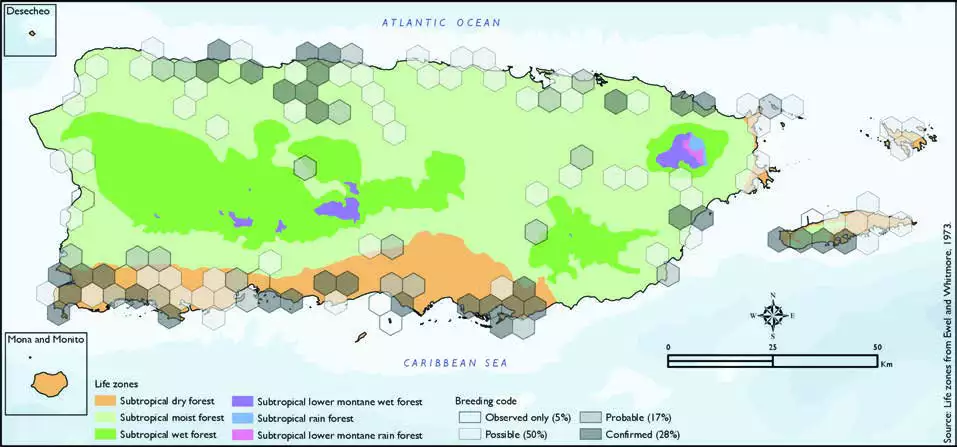Black-necked Stilt
Description
The black-necked stilt (Himantopus mexicanus) is a locally abundant shorebird of American wetlands and coastlines. It is found from the coastal areas of California through much of the interior western United States and along the Gulf of Mexico as far east as Florida, then south through Central America and the Caribbean to Ecuador and the Galápagos Islands. The northernmost populations, particularly those from inland, are migratory, wintering from the extreme south of the United States to southern Mexico, rarely as far south as Costa Rica; on the Baja California peninsula it is only found regularly in winter.
Distribution & Habitat
The Black-necked Stilt occurs throughout the Western
Hemisphere including the West
Indies, where it is a common
and locally abundant resident
shorebird in Puerto Rico (Oberle
2018, Raffaele and others 1998),
Culebra, Mona (Ventosa-Febles
and others 2005), and Vieques
(Gemmill 2015). On Puerto
Rico, it is very common in the
Cabo Rojo salt fl ats (Collazo and
others 1995) as well as Jobos
Bay (Wunderle, Jr. and others
1989) and elsewhere. The Black-
necked Stilt is associated with
shallow saltwater or freshwater
with a soft muddy bottom,
grassy marshes, wet savanna, mudfl ats, shallow ponds, fl ooded
fields, borders of salt ponds,
and mangrove swamps, and is
primarily found on the coastal
plains (Oberle 2018, Raffaele and
others 1998). The atlas fieldwork
yielded a total of 290 records
within 129 hexagons or 27
percent of the 479 total hexagons
(see map). Of the 129 hexagons
where this species was found,
breeding met the atlas definition
of confirmed in 28 percent (36)
of the hexagons, probable in 17
percent (22), and possible in 50
percent (64), while the species
was observed in 5 percent (7)
of the hexagons but without
evidence of breeding (see map). Black-necked Stilt distribution. The map shows the highest breeding code by hexagon and overlaying the ecological life zones in
Puerto Rico. Note: percentages may not total 100 due to rounding. 101Black-necked Stilt/Viuda

Breeding Habits
The Black-necked Stilt builds a nest made of grass and twigs
on the ground near water, from
late April to August, and from
September to October, according
to previously published reports
(Raffaele and others 1998). Atlas
results show that this species
breeds throughout the year, but
it is more active from April to
July (see chart). Results show
that this species breeds within
the subtropical moist (57 percent of the hexagons) and subtropical
dry forest life zones (43 percent
of the hexagons) (see table
and map).
Conservation
The Black-necked Stilt population is suspected to be
increasing, and it is listed as a
species of least concern by the
IUCN (Robinson and others
2020). Locally, this species is not
listed in any of the threatened
categories used by PRDNER and USFWS. In Puerto Rico,
the Black-necked Stilt has a
protected habitat in land of 14
percent or 411 km2 of the total area covered by the hexagons
where evidence of breeding
was found for this species
(2917 km2).
Related Species
Family:
stilt